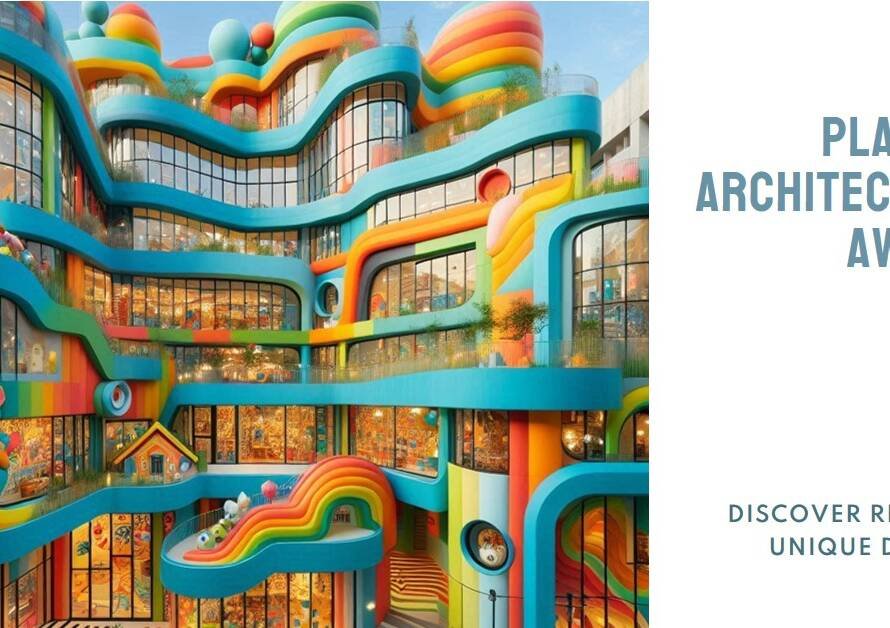
Table of Contents
1. Introduction: The Transformative Power of 3D Visualizations
In the realm of architecture and design, the adoption of 3D architectural visualizations has revolutionized the way projects are conceptualized, presented, and executed. This blog post delves into the significant cost-saving advantages that stem from leveraging 3D visualizations throughout the architectural design and development process. By harnessing the capabilities of 3D rendering technologies, architects, developers, and clients can optimize resources, reduce expenses, and streamline project workflows while achieving exceptional visual clarity and accuracy.
2. Early Visualization: Minimizing Design Iterations and Revisions
One of the primary cost-saving benefits of utilizing 3D architectural visualizations is the ability to visualize designs early in the project lifecycle. By creating detailed 3D models and renderings, architects and designers can communicate design intent effectively to clients and stakeholders. This early visualization phase reduces the likelihood of design misunderstandings, minimizes costly design iterations and revisions during later stages, and ensures alignment with client expectations from the outset. The clarity provided by 3D visualizations mitigates potential design errors and saves valuable time and resources that would otherwise be spent on rework.
3. Enhanced Communication: Facilitating Efficient Collaboration
Effective communication is paramount in architecture and construction projects, and 3D visualizations serve as powerful communication tools that bridge the gap between design concepts and real-world implementation. By presenting photorealistic renderings, walkthroughs, and virtual tours, architects can convey design concepts, spatial relationships, material finishes, and lighting scenarios comprehensively to clients, contractors, and project teams. This enhanced communication leads to better decision-making, faster approvals, reduced misunderstandings, and ultimately, cost savings by avoiding costly design changes and delays due to miscommunication.
4. Reduced Physical Prototyping: Embracing Digital Mockups
Traditionally, architects relied on physical prototypes, scale models, and mockups to visualize and test designs, which incurred significant costs in materials, labor, and time. With 3D architectural visualizations, digital mockups and virtual prototypes replace physical models, offering realistic representations of spaces, structures, and interiors without the need for costly physical materials. This shift not only reduces prototyping expenses but also allows for quick design iterations, exploration of design alternatives, and faster decision-making, optimizing project timelines and budget allocations.
5. Design Validation and Iteration: Iterating with Precision
The iterative nature of design in architecture demands thorough validation of design concepts, spatial arrangements, and aesthetic choices. 3D architectural visualizations facilitate this validation process by allowing architects and clients to explore different design options, material palettes, lighting scenarios, and furniture layouts in a virtual environment. Real-time rendering capabilities enable quick adjustments, instant feedback, and comparative studies between design iterations, empowering informed decision-making and ensuring that finalized designs meet functional, aesthetic, and budgetary requirements seamlessly.
6. Streamlined Marketing and Pre-Sales Efforts: Visualizing the Future
For real estate developers, property marketers, and sales teams, 3D architectural visualizations play a pivotal role in showcasing upcoming projects, residential units, commercial spaces, and amenities to potential buyers and investors. High-quality renderings, immersive virtual tours, and interactive presentations enable stakeholders to visualize properties realistically, understand spatial configurations, experience interior designs, and assess property features before construction commences. This pre-sales visualization not only attracts prospective buyers early in the project lifecycle but also reduces marketing costs associated with physical showrooms, printed materials, and promotional events.
7. Construction Documentation: Enhancing Accuracy and Efficiency
In the construction phase, accurate and detailed documentation is crucial for contractors, subcontractors, and construction teams to execute designs precisely and efficiently. 3D architectural visualizations serve as valuable references for construction documentation, providing clear insights into building dimensions, structural elements, MEP (mechanical, electrical, plumbing) systems, and finishes. This visual clarity minimizes construction errors, prevents rework, optimizes material usage, and maintains project schedules, ultimately leading to cost savings in labor, materials, and project management overheads.
8. Remote Collaboration and Client Engagement: Expanding Boundaries
The global landscape of architecture and design often involves collaborations with remote teams, international clients, and stakeholders across different time zones. 3D architectural visualizations facilitate seamless remote collaboration by enabling real-time sharing of design progress, feedback integration, and virtual meetings using cloud-based platforms and collaboration tools. This virtual collaboration reduces travel expenses, accelerates decision-making processes, fosters client engagement, and ensures project continuity, even in distributed work environments, thereby reducing overall project costs and time-to-market.
9. Sustainable Design Visualization: Optimizing Resource Efficiency
In an era focused on sustainability and resource conservation, 3D architectural visualizations play a vital role in visualizing and optimizing sustainable design strategies. From daylight analysis and energy simulations to material lifecycle assessments and passive design strategies, 3D visualizations allow architects and clients to evaluate and refine sustainable design features early in the design phase. This proactive approach minimizes costly retrofitting efforts, optimizes building performance, reduces energy consumption, and enhances occupant comfort and well-being, aligning with cost-saving objectives and environmental stewardship.
10. Conclusion: Leveraging the Power of Visualization for Cost Efficiency


In conclusion, the adoption of 3D architectural visualizations brings forth a myriad of cost-saving advantages across the architectural design and construction lifecycle. From early visualization and design validation to streamlined collaboration, marketing effectiveness, and sustainable design optimizations, 3D visualizations empower architects, designers, developers, and clients to make informed decisions, mitigate risks, and achieve project goals within budgetary constraints. By harnessing the power of visualization technologies, the industry can drive innovation, efficiency, and cost savings while delivering exceptional architectural experiences and built environments that inspire and endure.


